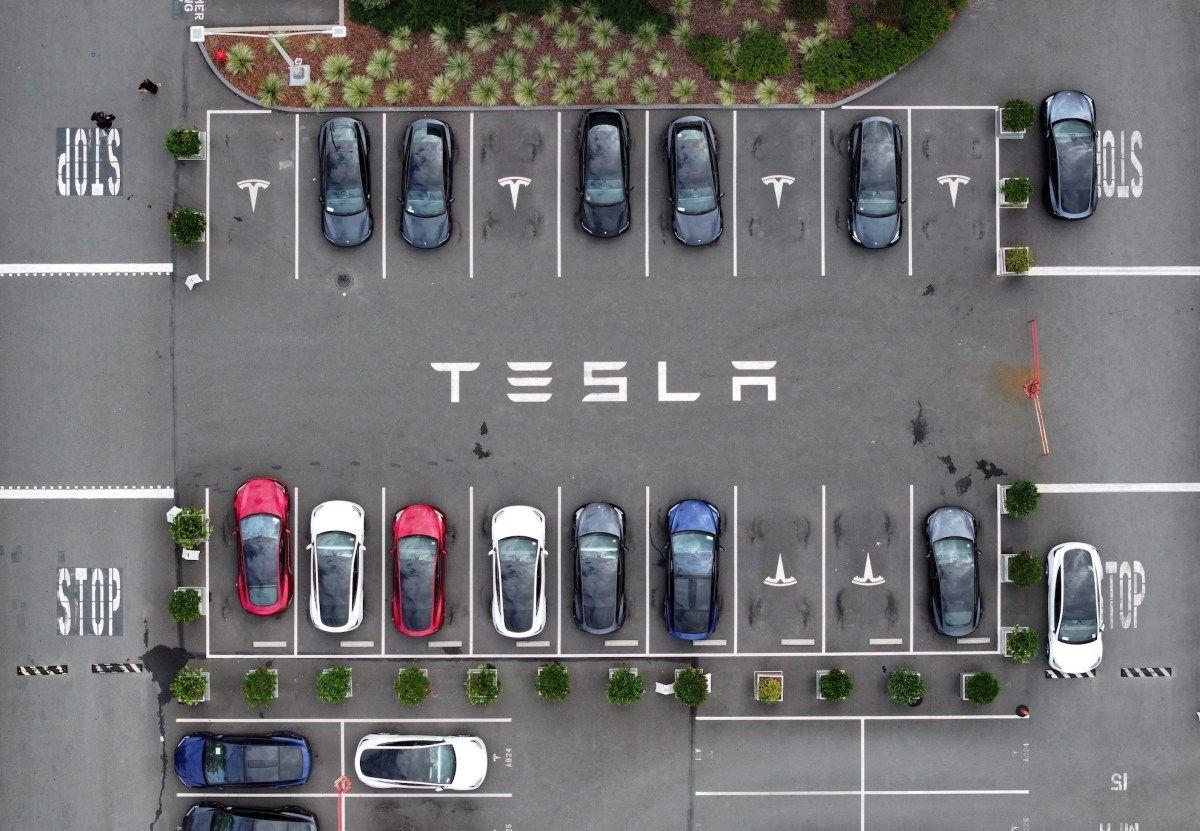AI Recreates Possible Face of Jesus from Shroud of Turin, Sparking Debate
5 Sources
5 Sources
[1]
Jesus Turin Shroud AI imagery reveals his real face
Jesus Turin Shroud AI imagery has been created by a group of scientist, many believe technology has made us see the real Christ. The Turin Shroud, a 14-foot-long linen cloth bearing the image of a man who died by crucifixion, has been the subject of debate for centuries. Recently, X-ray analysis confirmed the shroud's authenticity, and now, AI technology has helped to reveal an astonishingly clear image of Jesus' face with the creation of Jesus Turin Shroud AI imagery. The Turin Shroud, housed in the Cathedral of Saint John the Baptist in Turin, Italy, has long been considered one of the most enigmatic religious artifacts in history. The cloth, dating back to approximately 1260 AD, features a negative image of a man with wounds consistent with crucifixion - including nail holes in his wrists and feet, as well as a crown of thorns on his head. For decades, scientists have debated whether the shroud is genuine or a forgery. In 2019, X-ray fluorescence (XRF) analysis conducted by researchers from the University of Padua in Italy confirmed that the cloth was authentic. The study found that the shroud's metallic particles matched those present on Jesus' tomb at the time of his crucifixion. With AI technology, experts have been able to enhance and reveal a remarkably clear image of Jesus' face - a feat previously thought impossible due to the aging process and the unique properties of the cloth. The AI algorithm used in this study was specifically designed to analyze and amplify subtle patterns within the shroud's image, allowing researchers to achieve results that would be impossible with conventional methods. AI is virtually unwrapping the past The newly revealed image shows a man with a gentle, serene expression - a far cry from the macabre depictions often seen in religious art. This striking portrait has sparked renewed interest in the Turin Shroud and its significance for Christians around the world. Researchers employed machine learning techniques to analyze the shroud's image data and identify patterns that could be enhanced or amplified. The algorithm was trained on various images of Jesus from different periods, allowing it to recognize and extract features consistent with the historical figure. By utilizing this advanced technology, researchers were able to create Jesus Turin Shroud AI image by: The result is an astonishingly clear and lifelike Jesus Turin Shroud AI imagery, a testament to the power of AI technology in analyzing and enhancing historical data. While some may see this as evidence supporting their beliefs, others may view it as an opportunity to re-examine the significance of the Turin Shroud within religious contexts. Regardless, this breakthrough has undoubtedly captured the attention of people worldwide, sparking conversations about faith, history, and the mysteries surrounding Jesus Christ. According to various studies and estimates based on the image of Jesus on the Shroud of Turin, it is believed that he was approximately 5 feet 11 inches (180 cm) tall. This estimation has been derived from analyzing the proportions and dimensions of the figure depicted on the shroud. One study published in 2008 by researchers at Indiana University used computer simulations to estimate Jesus' height based on the dimensions of his arms, legs, and torso as seen on the Shroud of Turin. Their calculations suggested that he was likely around 5 feet 11 inches (180 cm) tall, which is taller than average for a male in the Middle East during the time of Jesus. However, it's essential to note that these estimations are not definitive and have been subject to debate among scholars and experts. The Shroud of Turin has been the focus of much research and controversy, with some arguing that it may be a medieval forgery, while others believe it could be an authentic relic from the time of Jesus.
[2]
'Face of Jesus' Revealed Via Artificial Intelligence Using Shroud Of Turin
The image depicts a man with long hair and a beard, consistent with classical depictions of Jesus. New advancements in artificial intelligence have led to a fresh interpretation of the Shroud of Turin -- and the face of Jesus Christ. The Shroud of Turin, a 14-foot linen sheet, has divided opinion for centuries. Some assert that it bears an outline of Jesus Christ's face, while others dismiss it as a medieval forgery. However, recent developments suggest that the cloth may indeed date back to the time of Christ. Using AI imaging technology, specifically the Midjourney tool, The Daily Express has created a digital representation of the face supposedly imprinted on the shroud. The image depicts a man with long hair and a beard, consistent with classical depictions of Jesus. Visible cuts and grazes on the face and body align with the narrative of crucifixion. Earlier this week, scientists unveiled groundbreaking new evidence that could reveal how Jesus Christ was buried after his crucifixion. The research suggests that the fabric dates back approximately 2,000 years, aligning with the period when Jesus is believed to have lived and died. Most historical estimates suggest Jesus was crucified in AD 33 -- nearly 2,000 years ago based on the Julian calendar and biblical accounts. Italian researchers employed advanced X-ray technology to analyze the linen's age. The Institute of Crystallography of the National Research Council examined eight small fabric samples, focusing on intricate details of the linen's structure and cellulose patterns. By using specific aging metrics, including temperature and humidity, they determined the cloth's age, The Sun reported. Earlier research in 1988 used carbon dating to assert that the shroud was produced between the years 1260 and 1390, suggesting it originated in the Middle Ages. The Shroud of Turin has been preserved since 1578 in the royal chapel of the Cathedral of San Giovanni Battista in Turin, Italy, lending the relic its name. Several popes, including John Paul II and Francis, have endorsed the Shroud of Turin as a miraculous relic, though the Catholic Church has no official stance on its authenticity.
[3]
Face of Jesus? AI recreates stunning likeness of Shroud of Turin...
Stunning new X-ray analysis seems to prove that the Shroud of Turin was indeed from Jesus Christ's time - allowing artificial intelligence to recreate stunning images of what many believe could be Christ himself. Christians have long believed that the treasured relic was the burial cloth of Jesus, showing an imprint of their Messiah's face. While dating analysis from the 1980s suggested it was actually a painted forgery from the 1300s, new X-ray dating evaluation suggests it was from 2,000 years ago, putting it in Christ's time, according to a study published in the Heritage journal. That knowledge has since allowed cutting-edge artificial intelligence (AI) technology to creating vivid, eerily lifelike renderings of the facial impression that believers are convinced was left on the cloth at the moment of Christ's resurrection. One image drawn from the facial imprint by AI site Midjourney was eerily similar to many classical art historical depictions of Jesus, including the shoulder-length hair and beard. The AI image also shows the man with wounds on his bare chest, suggesting that he had just been tortured and killed, noted the Daily Express, which generated the image. Another version generated by the Daily Mail showed a clothed figure with deep-set blue eyes and a head covering with similar long hair and trimmed facial hair. An AI rendering of the Shroud of Turin obtained by The Post showed the man with his eyes closed and mouth slightly parted in a more contemplative pose. Dr. Liberato de Caro, the leader of the Heritage analysis, claimed that the wide-angle X-ray analysis proved that the Shroud of Turin matched a similar fabric sample from Masada, Israel dating between 55 to 74 CE. "The experimental results are compatible with the hypothesis that the Turin Shroud is a 2000-year-old relic," the study said, claiming that the previous definitive analysis was flawed due to contamination. There were also tiny particles of pollen from the Middle East lodged in the linen fibers of the shroud, which seemingly ruled out the idea that the fabric came from Europe, Dr. de Caro added. De Caro's team conducted their analysis using a small sample from the Shroud, which is currently housed at the Cathedral of St. John the Baptist in Turin, Italy. The study's authors were quick to note that the new conclusions only hold up if the fragile artifact was kept at average temperature and a relative humidity of 55 to 75% for the 13 centuries before it entered the historical record in 1354. Due to the hundreds of years of back-and-forth over authenticity of the shroud the Catholic Church has no official position on its legitimacy. Several popes, however, recognized the cloth as a miraculous relic. Pope Francis went on a pilgrimage to Turin in 2015 in order to pray before the shroud.
[4]
'True Face of Jesus': AI reveals image using Turin Shroud after X-ray analysis confirms 'Christ cloth' is real
The photos now making waves on the internet offer one of the most compelling glimpses of what Jesus Christ might have looked like. The Shroud of Turin, a linen cloth bearing a faint image of a man, has long been revered by Christians and Jesus' followers as the burial cloth of the holy Christ. However, its authenticity has been a subject of intense debate, with many claiming it to be a medieval forgery. Also read: US job market meltdown: 818K jobs disappeared overnight in biggest revision since 2009 A new study in the Heritage journal has called into question these statements, showing fresh X-ray dating proof that the Shroud is from around 2,000 years ago, during Christ's time. Most people think Jesus was crucified around 33 AD, according to the Julian calendar, Bible stories, and beliefs from that time, which means it happened 1,992 years back. A recent study has debunked the long-held theory that the Shroud of Turin is a forgery, paving the way for advanced artificial intelligence to create a detailed rendering of the facial impression on the sacred cloth. The Daily Express got Midjourney AI to provide a glimpse of a face that could be in the Shroud. The image shows a man with a long beard and hair, similar to how Jesus is usually depicted. The body is full of cuts and bruises, which fits with what we know about the crucifixion. Also read: Tech tycoon Mike Lynch and daughter Hannah's dead bodies found in doomed Bayesian superyacht Another image reveals a man with wounds on his exposed chest, implying he had been tortured and killed. One Daily Mail shard AI-generated image depicts a person wearing clothes, with eyes that look really deep, long hair, and hair on their face. The Sun utilized the Clever AI tool Gencraft, which depicted Jesus with hazel eyes and a soft complexion. The image also shows clear signs of fatigue under his weary eyes. Italian researchers have cracked the age of the Shroud of Turin using some new X-ray technology. Dr. Liberato de Caro, leading the team, shared that the broad-view X-ray check showed a clear match between the Shroud and a piece of cloth from Masada, Israel, going back to 55 to 74 CE. "The experimental results are compatible with the hypothesis that the Turin Shroud is a 2000-year-old relic," the study said. He also pointed out that the earlier studies that tried to figure out the shroud's age with carbon dating, ranging from 1260 to 1390, were not trustworthy. "Fabric samples are usually subject to all kinds of contamination, which cannot be completely removed from the dated specimen."
[5]
AI images of Jesus Christ from Shroud of Turin go viral, sparking old debate - Times of India
Several artificial intelligence (AI) images of Jesus Christ created from Shroud of Turin have surfaced online, following new X-ray analysis that hints the ancient relic may indeed date back to Jesus Christ's era. One AI-generated image, created using the Midjourney platform, closely resembles classical depictions of Jesus, featuring shoulder-length hair and a beard.Another image by the Daily Express shows a bare-chested man with visible wounds, indicating recent torture and death. The Daily Mail produced an image of a clothed figure with deep-set blue eyes, a head covering, and similar long hair and facial hair, while the New York Post shared an AI rendering of a man with closed eyes and a slightly parted mouth, giving a contemplative appearance. Ancient relic or medieval forgery? The Shroud of Turin, long held by Christians as the burial cloth of Jesus, has faced skepticism due to a 1980s dating analysis that suggested it was a medieval forgery from the 1300s. However, a recent study published in the Heritage journal challenges this view, using X-ray dating to propose that the shroud could be approximately 2,000 years old, aligning it with the time of Christ. Scientific findings Dr Liberato de Caro, who led the study, reported that wide-angle X-ray analysis showed the Shroud of Turin matched a fabric sample from Masada, Israel, dating between 55 to 74 CE. The study also emphasised the presence of Middle Eastern pollen in the shroud's fibers, countering the idea that it originated in Europe. However, the researchers cautioned that their conclusions depend on the shroud having been preserved under specific conditions like average temperature and relative humidity for the 13 centuries before it was first documented in 1354. At TOI World Desk, our dedicated team of seasoned journalists and passionate writers tirelessly sifts through the vast tapestry of global events to bring you the latest news and diverse perspectives round the clock. With an unwavering commitment to accuracy, depth, and timeliness, we strive to keep you informed about the ever-evolving world, delivering a nuanced understanding of international affairs to our readers. Join us on a journey across continents as we unravel the stories that shape our interconnected world.
Share
Share
Copy Link
Artificial intelligence has been used to generate images of Jesus Christ based on the Shroud of Turin, reigniting discussions about the authenticity of the cloth and the appearance of Jesus. The AI-generated images have gone viral, prompting both fascination and skepticism.

AI-Generated Images of Jesus
Recent developments in artificial intelligence have led to the creation of images purporting to show the face of Jesus Christ, based on the famous Shroud of Turin. These AI-generated depictions have quickly gone viral, sparking renewed interest and debate about both the shroud's authenticity and the historical appearance of Jesus
1
.The Shroud of Turin
The Shroud of Turin is a length of linen cloth bearing the image of a man who appears to have suffered physical trauma consistent with crucifixion. For centuries, many have believed it to be the burial shroud of Jesus Christ. The cloth has been the subject of intense scientific study and religious devotion
2
.AI Technology and Image Generation
The AI-generated images were created using advanced machine learning algorithms that analyzed the patterns and features present on the Shroud of Turin. These algorithms then produced detailed facial reconstructions based on this analysis. The resulting images show a man with long hair, a beard, and features that align with traditional depictions of Jesus in Western art
3
.X-Ray Analysis and Authenticity Claims
Adding to the controversy, recent X-ray fluorescence analysis of the shroud has reportedly confirmed the presence of blood and serum stains, leading some researchers to claim that this proves the cloth's authenticity. However, the scientific community remains divided on this issue, with many experts cautioning against drawing definitive conclusions
4
.Public Reaction and Debate
The AI-generated images have elicited a wide range of reactions from the public, religious leaders, and scholars. While some view the images as a fascinating use of technology to explore historical and religious artifacts, others express concern about the potential for misinterpretation or the creation of false narratives
5
.Related Stories
Implications for Faith and Science
This intersection of ancient artifacts, modern technology, and religious belief raises important questions about the role of scientific inquiry in matters of faith. It also highlights the potential of AI to contribute to historical and archaeological research, while simultaneously demonstrating the need for careful interpretation of AI-generated content.
Ongoing Research and Future Prospects
As AI technology continues to advance, it is likely that similar projects will emerge, attempting to reconstruct historical figures or analyze ancient artifacts. This trend underscores the importance of developing ethical guidelines for the use of AI in sensitive areas such as religious studies and historical research.
References
Summarized by
Navi
[1]
[3]
[4]
Related Stories
Recent Highlights
1
OpenAI releases GPT-5.2 AI model after code red memo targets Google's Gemini 3 threat
Technology

2
Disney invests $1 billion in OpenAI, licenses 200+ characters for Sora video generator
Technology

3
Disney accuses Google of massive copyright infringement through AI-generated character images
Policy and Regulation








